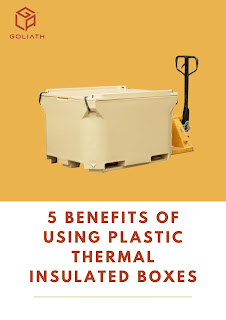
Designing fish storage boxes requires a thorough understanding of the unique demands of the fishing industry. The logistical challenges and biological needs of fish storage dictate that these containers are not merely functional; they must be meticulously crafted to ensure the freshness and safety of their contents. As the U.S.A. remains one of the leading fish trading hubs, understanding the key factors for designing fish storage boxes becomes imperative for suppliers and manufacturers alike. Below are crucial elements that should be considered in this process.
1. Material Selection
The materials used in constructing fish storage boxes play a critical role in protecting the quality of the fish. Common materials include:
Plastic: Lightweight, durable, and resistant to corrosion. High-density polyethylene (HDPE) and polypropylene (PP) are popular choices for their ability to withstand low temperatures and ease of cleaning.
Insulated Materials: To maintain temperature control, insulated storage boxes are essential. These can be lined with materials such as expanded polystyrene (EPS) or polyurethane that help keep fish fresh during transport.
Metal: While not as common for everyday use, aluminum or stainless steel can be utilized in specialized applications where durability is key.
Choosing the right material affects not just the performance but also the cost and sustainability of the product.
2. Temperature Regulation
Temperature control is a crucial factor in the fishing industry, as fish are perishable products. Containers must be designed to keep fish at optimal temperatures to prevent spoilage. The design should account for:
Insulation: As mentioned, insulated walls help maintain the internal temperature, slowing down bacterial growth and enzyme activity.
Drainage Systems: Water from melting ice or condensation can lead to a warm environment. Incorporating drainage holes or channels will help in removing excess water, keeping the fish cooler.
3. Size and Volume
The sizes of fish storage boxes should cater to different fish species and quantities typically handled in the U.S.A. market. Important aspects to consider include:
Modularity: Boxes that can be stacked or nested help save space both during storage and transport. Understanding the usual dimensions of commercially traded fish will inform the design.
Custom Sizes: Offering various sizes tailored to specific fish types or quantities can make the boxes more appealing to distributors, retailers, and fishermen.
4. Ergonomics and Handling
Ease of handling fish storage boxes is vital, as these insulated storage boxes
are frequently moved during loading and unloading. The design should consider:
Weight: Lightweight materials can minimize the burden on workers, ensuring easier transportation.
Handles: Ergonomically designed handles allow for easier lifting and carrying. Incorporating multiple handles can help balance heavy loads.
Stackability: Designing boxes that stack securely can help in transporting multiple boxes at once, improving efficiency.
5. Compliance with Regulations
Fish storage boxes must comply with local and international regulations related to food safety. For U.S.A., this includes the following:
Food Safety Standards: Containers should meet the guidelines s to ensure they are safe for food contact.
Labeling Requirements: Boxes may need to have labels indicating the type of fish, catch date, and expiry date, especially for import/export operations.
Designers must remain informed about these regulations to ensure that products can be used legally in various markets.
6. Sustainability
Sustainability is increasingly becoming an essential consideration in product design. Using environmentally-friendly materials can help attract eco-conscious businesses.
Containers made from recyclable materials can appeal to businesses looking to improve their environmental footprint.
Consideration of transportation emissions during the supply chain can impact material selection. Ingredients sourced locally reduce shipping distances and environmental impact.
7. Cost-Effectiveness and Durability
Cost is always a consideration. The design should balance quality and affordability.
storage boxes should withstand harsh conditions, including excessive moisture, high and low temperatures, and rough handling during transportation. The longer the lifespan of the container, the better the overall cost-per-use ratio.
Cost-effective design can keep manufacturing expenses low, aligned with market demand for competitive pricing.
8. Versatility
The versatility of insulated fish storage boxes can significantly enhance their market appeal. Designers should consider:
Multi-Purpose Use: Containers that can serve multiple functions, such as transporting different marine products, can appeal to a broader customer base.
Expandable Features: Add-ons like removable dividers or modular inserts can make containers more adaptable to different species or quantities of fish.
In conclusion, designing fish storage boxes requires a balance of multiple factors — material selection, temperature control, ergonomic handling, and sustainability. By considering these aspects in the design process, manufacturers in U.S.A. can create effective and innovative solutions to meet the specific needs of the fishing industry, fostering a more efficient and sustainable market for fish storage containers. As the demand continues to evolve, so too must the designs to keep pace with the industry’s dynamic landscape.

Comments
Post a Comment